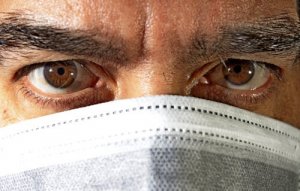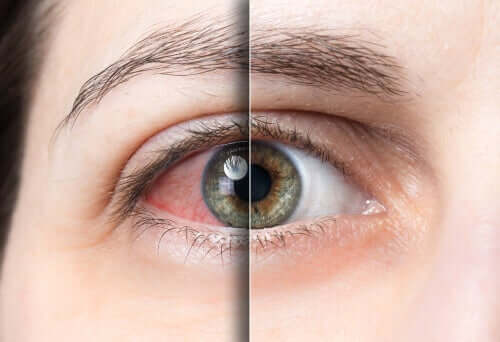Is Conjunctivitis a New Symptom of Coronavirus?


Written and verified by the doctor Leonardo Biolatto
In recent days, the news has been focusing more on more on conjunctivitis as a new symptom of coronavirus. While it’s a symptom that various medical associations recorded since the beginning of the outbreak, its presence has now been confirmed.
In the United States, members of health teams first warned about this new symptom. Just the same, neither the Centers for Disease Control and Prevention (CDC) or the World Health Organization (WHO) have included conjunctivitis on their alert list…
Among scientific literature, two articles exist on the subject:
- A study in the Journal of Medical Virology found SARS-CoV-2 in the ocular secretions of some patients, suggesting the presence of coronavirus in the conjunctiva of the eye.
- Another study in the New England Journal of Medicine studied the symptoms of infected individuals who tested positive for coronavirus in China. And almost 1% of these cases involved conjunctiva congestion.
What is conjunctivitis?
Conjunctivitis is one of the most frequent ocular pathologies in the entire world. In general, it involves a mild infection that goes away quickly.
Conjunctivitis is an inflammation of the eye’s conjunctiva, a very thin mucous membrane. It’s located beneath the eyelids and cover the external part of the eyeball. When it swells, the tiny blood vessels there swell and the eye appears to be red.
If it’s a new symptom of coronavirus, then a patient’s conjunctivitis has to be a result of SARS-CoV-2. Outside of the current pandemic, conjunctivitis can develop as a result of bacteria and substances in the environment.
So, we’re looking at a symptom that can be viral, bacterial, or allergic. There are also other pathologies associated with conjunctivitis, outside of coronavirus. For example, Sjogren’s syndrome, an autoimmune condition.

Keep reading: Types of Masks to Protect Against Coronavirus
What does the American Academy of Ophthalmology have to say?
The American Academy of Ophthalmology released a statement on the issue, gathering information from health teams. It gives credit to these workers and accepts conjunctivitis as a new symptom of coronavirus.
The theory is that the droplets through which COVID-19 spreads land on the conjunctiva of the eye. Don’t forget that the transmission of this virus occurs through respiratory drops that spread through the air.
Infection doesn’t occur only through direct transmission. We must keep in mind that the particles can also land on surfaces and then we bring them to our faces with our hands. Therefore, the disinfection of our surroundings and our hands is fundamental.
According to the American Academy of Ophthalmology, if a patient has conjunctivitis and fever, as well as some respiratory symptom, then doctors will immediately suspect coronavirus. Even more so if the individual has been in contact with infected geographical regions or patients.
On this basis, the Academy recommends that health teams protect their eyes when tending to patients… not just their mouth and nose. This new symptom of coronavirus modifies the means of protection, making them more strict.
Discover more: Is it Possible to Be Reinfected by Coronavirus?
Other new symptoms of coronavirus
Besides conjunctivitis, other medical associations warn about more symptoms that could be indicative of coronavirus, besides the classic ones. For example, the Spanish Neurology Society released a statement suggesting the isolation of people with a sudden loss of their sense of smell, under suspicion of COVID-19.
Along the same lines, digestive alterations were mentioned as new symptoms of coronavirus. Especially diarrhea, which is present in almost 50% of confirmed cases.

What to do in the face of these new symptoms of coronavirus
Conjunctivitis, sudden loss of the senses of taste and smell, and diarrhea should all be considered in our current context. Although the WHO has not included them in their list of main symptoms, medical associations recommend testing those who display these symptoms for coronavirus.
Since we are in the midst of a pandemic, we must take specific measures in order to reduce the contagion rate. Therefore, the alert is higher now than under normal circumstances. That’s why the attention that specialists place on symptoms is higher than average.
If you suffer these new coronavirus symptoms, you should speak with a doctor. Each country has put mechanisms into place so that its inhabitants can communicate with health teams before going in. Respecting these consultation mechanisms is fundamental during this quarantine period.
All cited sources were thoroughly reviewed by our team to ensure their quality, reliability, currency, and validity. The bibliography of this article was considered reliable and of academic or scientific accuracy.
- Xia, Jianhua, et al. “Evaluation of coronavirus in tears and conjunctival secretions of patients with SARS‐CoV‐2 infection.” Journal of medical virology (2020).
- Guan, Wei-jie, et al. “Clinical characteristics of coronavirus disease 2019 in China.” New England Journal of Medicine (2020).
- Sun, M. D., et al. “Clinical characteristics of COVID-19 patients with digestive symptoms in Hubei, China: a descriptive, cross-sectional, multicenter study.”
- Altamirano, S., et al. “Recomendaciones para Médicos de Emergencias sobre la situación actual de Coronavirus (2019-nCoV) en Argentina.” (2020).
- Reviglio, Víctor Eduardo, et al. “2019-nCoV y oftalmología:¿ un nuevo capítulo de la misma historia?.” Oftalmología Clínica y Experimental (2020).
This text is provided for informational purposes only and does not replace consultation with a professional. If in doubt, consult your specialist.








